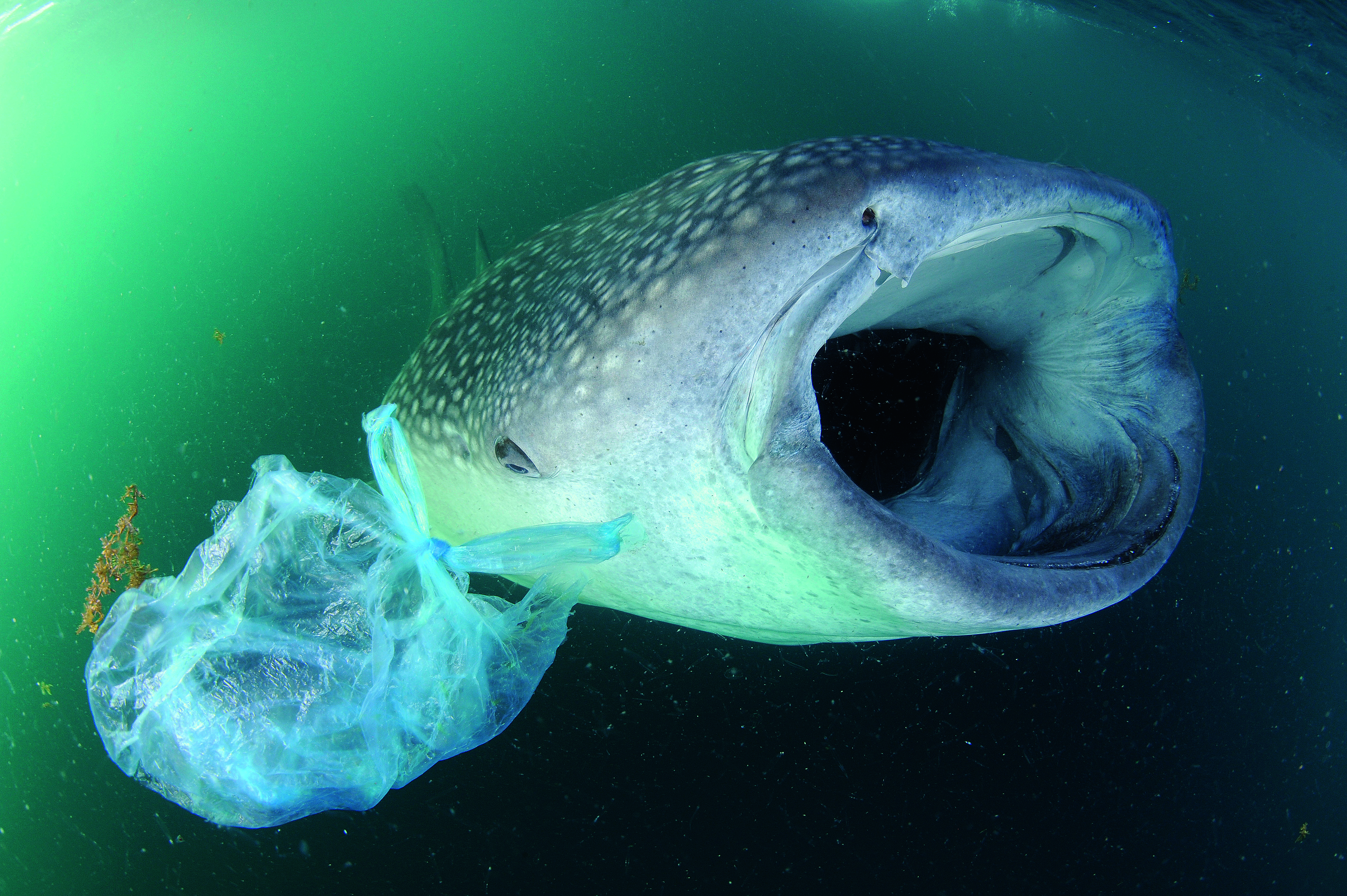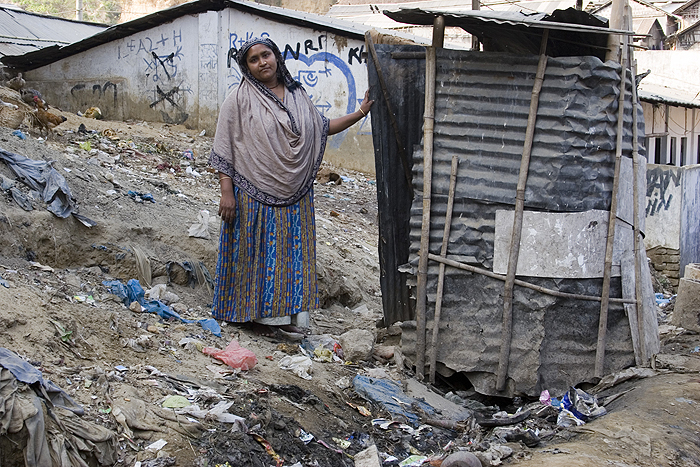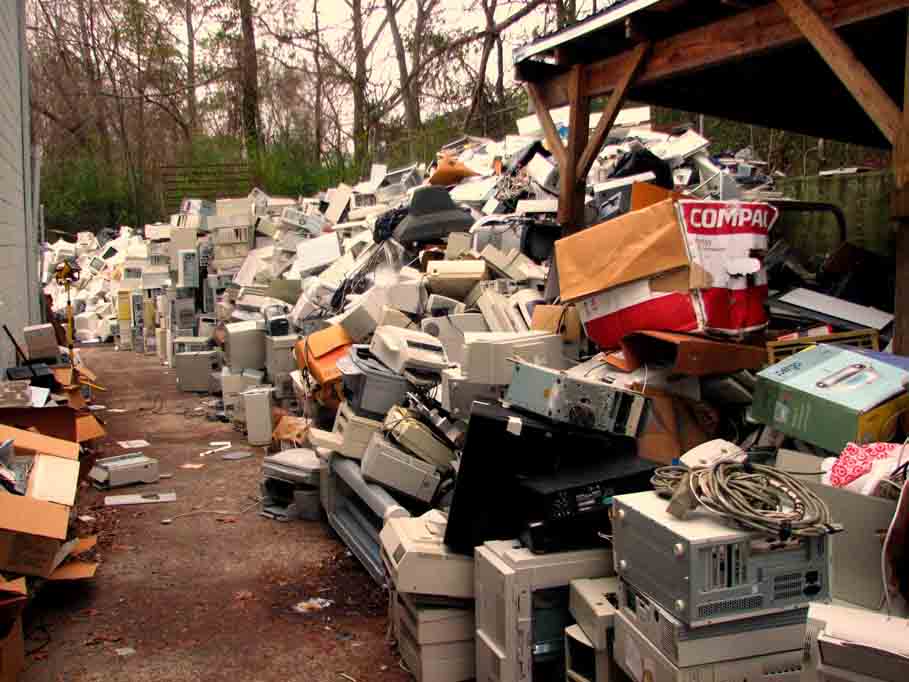What 11 Billion People Mean for Sanitation

Editor's note: By the end of this century, Earth may be home to 11 billion people, the United Nations has estimated, earlier than previously expected. As part of a week-long series, LiveScience is exploring what reaching this population milestone might mean for our planet, from our ability to feed that many people to our impact on the other species that call Earth home to our efforts to land on other planets. Check back here each day for the next installment.
Hong Kong, a city of 7 million inhabitants, faces a major garbage crisis. The region's three landfills are expected to fill up completely by 2020, and even if recycling increases, the country will have to expand its landfills to deal with the thousands of tons of waste generated every day, officials say.
"Hong Kong currently solely relies on landfills to dispose of its municipal solid waste, which is not a sustainable way to treat waste," said a spokesman for Hong Kong's Environmental Protection Department.
Hong Kong and its overflowing landfills are not alone. In fact, the planet as a whole faces a serious problem: what to do with the tons and tons of garbage, poop and other waste humans generate, especially with the population set to grow considerably this century.
A recent statistical analysis predicts the world population will hit 11 billion by the year 2100, outpacing United Nations estimates. By then, these piles of rubbish and other waste may become insurmountable.
Today, as an example, the world has about 3 billion urban residents, who generate 2.6 lbs. (1.2 kilograms) of municipal solid waste per person per day, a World Bank report estimates. That adds up to about 1.4 billion tons per year. [What 11 Billion People Means for the Planet]
By 2025, as a result of economic development and urbanization, that number will climb to 4.3 billion urban residents generating 2.4 billion tons of waste per year, the report estimates. Where will it all go?
Get the world’s most fascinating discoveries delivered straight to your inbox.
Some countries may run out of space to put all that waste, meaning the rubbish could end up in the oceans. Experts say people will have to find ways to recycle more and to generate energy from these waste streams if they're to have any hope of managing the issue.
"Even if the population were stable, we already have a serious problem," said Barbara Evans, a civil and environmental engineer at the University of Leeds, in England.
Dealing with the world's trash
Waste management varies widely from country to country. Larger countries can afford to create more landfills, but must also find ways to recycle more. Meanwhile, smaller countries face a more urgent risk of running out of landfill space.
"The current situation with solid waste is a bit of a checkerboard," said Sara Bixby, deputy executive director of the Solid Waste Association of North America. Europe, the United States and Australia are focusing on managing waste and lessening its environmental impact, but in many developing nations, rapid urbanization is outstripping waste management infrastructure, she said.
In 2011, the United States generated about 250 million tons (227 million metric tons) of trash, according to the Environmental Protection Agency. Just over half of that garbage went to landfills, about a third was recycled, and the remainder was burned to generate energy.
While the average size of U.S. landfills has increased over the years, their number has decreased. From 1990 to 2011, the total amount of waste going to landfills dropped by more than 11 million tons — from 145.3 million to 134.2 million tons. Despite producing one of the highest levels of solid waste per capita, the continental United States has enough open space for landfills in the foreseeable future.
The situation in smaller countries and areas is strikingly different. In Hong Kong, where landfills could fill up by 2020, the government is pursuing an aggressive recycling goal. But Hong Kong Environmental Protection Department officials told LiveScience that "landfills are an essential part of the waste management chain, as even with the best efforts in waste reduction and recycling, there is still a need to landfill wastes that cannot be recycled or treated."
And not all waste is created equal: Plastic is one of the worst offenders, because it takes so long to degrade. An unsettling amount winds up in the ocean, contributing to the Great Pacific Garbage Patch, a region of swirling marine debris in the central North Pacific Ocean. "We can't look at the ocean as just a liquid landfill," Bixby told LiveScience. Marine animals can ingest or become tangled in trash, and toxic waste can poison ecosystems.
Rather than simply finding more places to dump trash, the world should look for a way to decrease its need for landfills, Bixby said. But trash isn't the only kind of waste humans generate — there's human waste, also. And many parts of the developing world don't have basic sanitation facilities, making the issue even more urgent in those locations.
Human waste and public health
West Africa had an unusually severe rainy season in 2012, causing flooding in the slums of Sierra Leone and Guinea. The latrines in those countries weren't built to withstand so much water and overflowed, bringing on an epidemic of cholera, a diarrheal disease that spreads through contact with contaminated feces. The news agency IRIN News reported that the disease killed about 400 people and sickened more than 25,000 others.
Eleven billion people will produce a heap of human waste. Even now, rather than being treated and sent out into the ecosystem as environmentally safe waste fluid, much of the poop just piles up in inhabited areas. That's because, currently, about 2.6 billion people (35 percent of the world's population) live without access to basic sanitation. They don't have working toilets, or even a pit latrine, let alone sewage treatment plants. Many of these people live in developing countries, where most of the population growth is expected to occur. [5 Ways Toilets Change the World]
As in the case of Sierra Leone and Guinea, insufficient sanitation poses a serious threat to public health. Without proper toilet facilities, people are forced to defecate in the open, near rivers or living areas. In India, 290,000 gallons (1.1 million liters) of raw sewage get dumped into the Ganges River every minute, according to the World Health Organization.
Currently, poor sanitation "contributes to two of the three leading causes for preventable death for children under five," said Lisa Schectman, head of policy at the NGO WaterAid America. Human waste can contaminate the water supply, leading to diarrheal diseases like cholera, which many people suffer from chronically, Schectman said. These diseases cause malnourishment, low birth weight and cognitive problems. Poor sanitation also increases the risk of ingesting fecal matter, which can lead to stunted growth.
A fly that breeds exclusively on human excrement carries the disease called trachoma, the leading cause of preventable blindness. Feces can also contaminate soil, breeding parasitic worms like roundworm and hookworm that cause delays in brain development in children and serious intestinal blockages or even death in adults.
In the course of her work, Schectman has visited places with dire sanitation needs. "You would see ramshackle buildings. You'd see a concentration of flies. It might smell, particularly in hot climates. Sometimes you would see an open pit, especially in rural areas. In Bangladesh, during the rainy season, you may see sludge running down the streets," she told LiveScience.
Aside from health, lack of sanitation facilities is complicated by cultural mores and limits access to education. And the problems will only become more widespread as the population grows.
"An increasing population means increased human waste, and government provisions are not keeping up," Schectman said.
Culture and urbanization
Complicating the world's ability to deal with physical waste itself, discussing toilet matters is culturally taboo in some places, especially among women. "For women to discuss their bodily functions is considered completely out of the realm of possibility in many cultures," Schectman said. Women who lack toilet facilities must travel farther away to relieve themselves, putting them at risk for sexual violence. And many girls in developing countries drop out of school because they have no private restroom.
Public toilet blocks were advocated as a solution to the problem, but a study of such blocks in Bhopal, India, in November 2008 found that men were twice as likely as women to use them. Many women prefer to use "flying toilets" — basically plastic bags inside their homes — so they don't have to go outside at night.
The population uptick means more and more women will face these cultural dilemmas. A lack of sanitation facilities will keep more young women out of school, creating a wider education gap, Schectman said.
Further, the world population is not only growing, it's becoming more urbanized, placing a larger load on the systems that do exist. Cities need networks for removing waste, whether these are pipes or trucks or even handcarts. In places like Africa, a growing population means many people will live on the margins of formal cities, ignored by the political system.
"Sanitation is a highly politicized topic," said Evans, of Leeds University. "If you want systems to work well, you need to plan them in advance." Marginalized people lack the money and clout to build these systems for themselves. They need politicians to lobby for better infrastructure. If there's no economic development, a growing population could make sanitation problems exponentially worse, Evans said.
First-world problems
Developed countries have sanitation problems of their own. In Europe, most of the sewage treatment works were built before people understood biology. These systems were designed to remove organic matter, not microbes, said Sandy Cairncross, a public health engineer at the London School of Hygiene & Tropical Medicine in England. (Organic matter consists of anything containing carbon, whereas microbes are living organisms that can make people sick.) [Managing the World's Waste (Infographic)]
It wasn't until about 10 years ago that the European Union introduced standards of sanitation in terms of bacteria. Until recently, the city of Brussels dumped all of its sewage into the river Senne (or Zenne). But starting in 2000, the city began building water treatment plants to limit the amount of sewage that goes into the river.
Then there's the problem of expense. In the developed world, installing plumbing and sewers costs hundreds, if not thousands, of dollars, Cairncross said. As the urban population grows, it "means spending a lot of money in a hurry that isn't there," he said.
Climate change is further exacerbating the problems of managing a growing population's waste. Global warming is decreasing the snow and ice cover on mountains, which feeds rivers that supply cities with water for sewers. "Diminishing snow cover means many rivers that feed cities to flush sewers are not going to have much water in the dry season," Cairncross said.
Over the past 50 years, rainfall has been declining and becoming more seasonal in many cities, he said. At least one city in Australia has a desalination plant to get fresh water, and London is talking about putting one in, he said.
On the other hand, extreme weather, partly linked to climate change, will cause a greater risk of flooding in coastal cities. Flooding can wreak havoc on sanitation systems, like that seen during the 2012 cholera epidemic in Sierra Leone and Guinea.
Reduce, reuse, recycle
One promising option for dealing with the world's waste problems involves recovering materials or energy from all that refuse.
Some European countries have already stepped up recycling efforts. The United Kingdom has a landfill tax on waste that must be buried in the ground, and the country's total amount of landfill waste has dropped from about 110 million tons in 1997, a year after the tax was implemented, to about 45 million tons in 2012. Germany requires its citizens to separate all their waste and recyclables. And in the United States, about a third of waste is recycled, much of which is processed in China.
There's also potential to generate energy and resources from waste. Sweden, for instance, has launched a successful program for converting garbage into renewable energy. Only 4 percent of Swedish household waste gets landfilled. The country created its first waste incineration plants in the 1940s, and today the process is so efficient that Sweden has begun importing trash from other countries that pay for the service.
But solid waste isn't the only valuable kind of waste.
Wastewater contains about 10 times the amount of energy — in biochemical form — as that needed to treat the water, according to Barry Liner, director of the Water Science & Engineering Center at the not-for-profit Water Environment Federation. The excess energy in biological waste could be fed back to the power grid, and some companies are already doing this.
Microbes can digest biowaste and turn it into natural gas. In addition, water can be reclaimed for drinking, and nutrients such as nitrogen and phosphorus can be recovered for agricultural use. These systems are easier to implement in developed countries, Liner said, but they could also exist on a smaller scale elsewhere.
"If we're truly going to stay ahead of population growth, we're going to have to change the way we think," Bixby said.
Future of waste
There are reasons to be optimistic that the world can make the changes it needs to, based on changes that are already occurring.
One of the Millennium Development Goals, a set of eight international development goals established following the Millennium Summit of the United Nations in 2000, was to provide sanitation to 75 percent of the world by 2015. Currently, the world has reached 67 percent, said Liner, who is cautiously optimistic. "While we're not meeting the Millennium Development Goals in total, there is a lot of hope," he said.
The world partially achieved these goals by implementing decentralized systems such as shared latrines in urban areas. Small-scale systems are much less expensive than sewers and centralized wastewater facilities, Liner said.
Some organizations are trying to find ways to make sanitation facilities available off the grid. For example, the Bill and Melinda Gates Foundation's Reinvent the Toilet Challenge aims to develop sanitary waterless toilets that don't need a sewer connection or electricity, and cost less than five cents per user per day. The foundation has awarded grants to researchers worldwide to develop engineering solutions for human waste management, from solar-powered toilets to ones that recover and purify wastewater.
These kinds of efforts must be expanded if the world is to meet remaining sanitation needs, Liner and others say.
As Evans said, "We've got the opportunity today, if we take it, to put ourselves on the right path."
Follow Tanya Lewis on Twitter and Google+. Follow us @livescience, Facebook & Google+. Original article on LiveScience.



![The challenge of managing the world's solid waste in the 21st century. [See full infographic]](https://cdn.mos.cms.futurecdn.net/42UR4cLFNw6mGg6npkGP8M.jpg)




